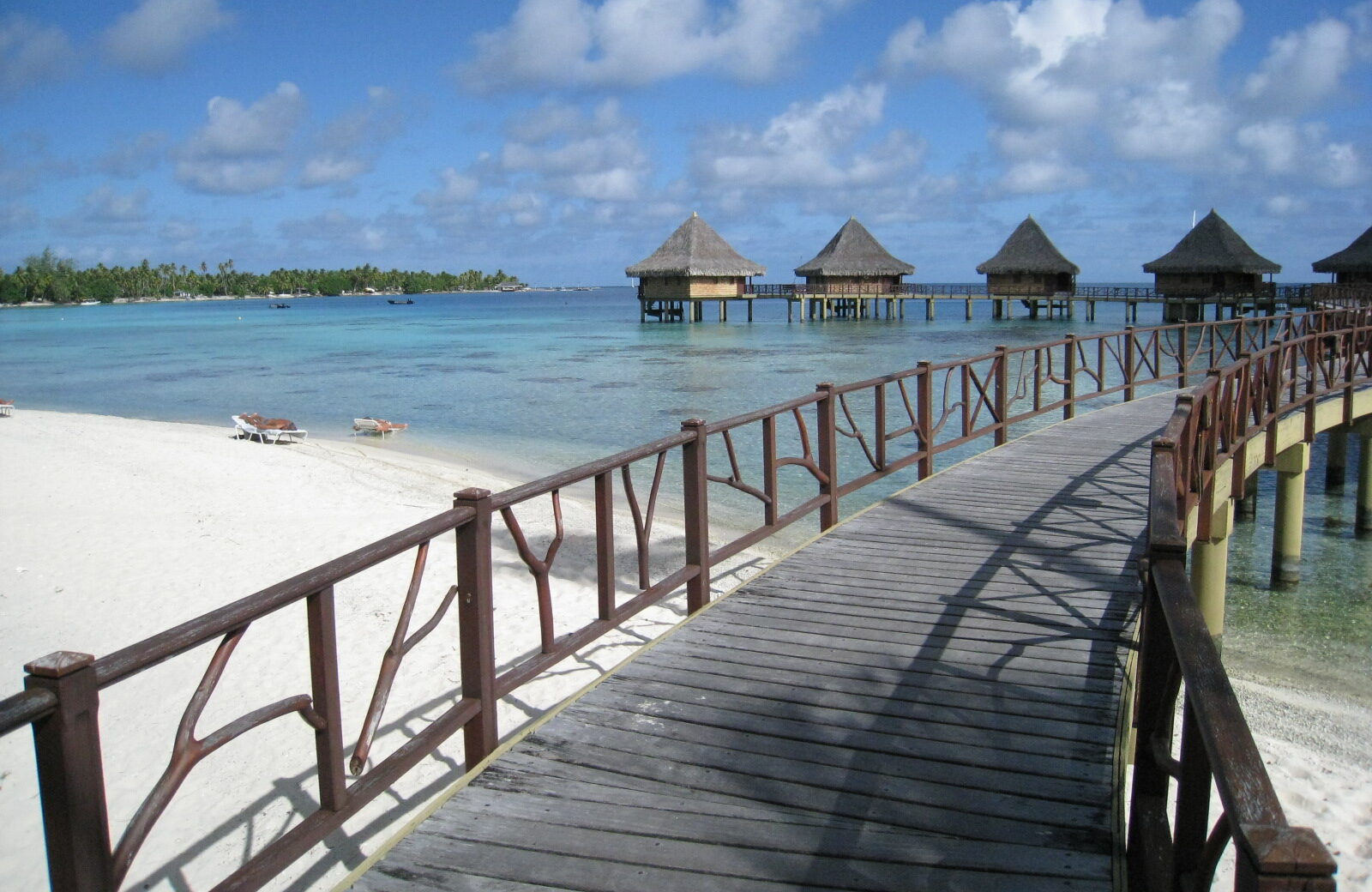Akoya Pearl
The first thing that comes to mind when people hear “pearls” in general is the Akoya cultured pearls.
They have a wide range of uses, from formal occasions such as weddings and funerals to casual and everyday wear.
Akoya Pearl
Cultivation of Akoya pearls mainly takes place in the seas of Mie, Ehime, Nagasaki, and Oita prefectures in Japan. The cultivation period is typically within a year, usually around 10 months. The grafting procedure is carried out around May or June. Harvesting of the pearls usually occurs from November to January of the following year. Among the pearls harvested within a year, they are referred to as "current-year pearls." On the other hand, pearls that have been cultivated for over a year are known as "over-year pearls". Generally, over-year pearls tend to exhibit thicker nacre layers and greater beauty compared to current-year pearls. However, as the cultivation period extends, there is an increased likelihood of stress on the oysters, which may result in pearl expulsion, susceptibility to diseases, and higher mortality rates.
- Shape
- Size
- Color
- Surface
- Luster
- Thickness
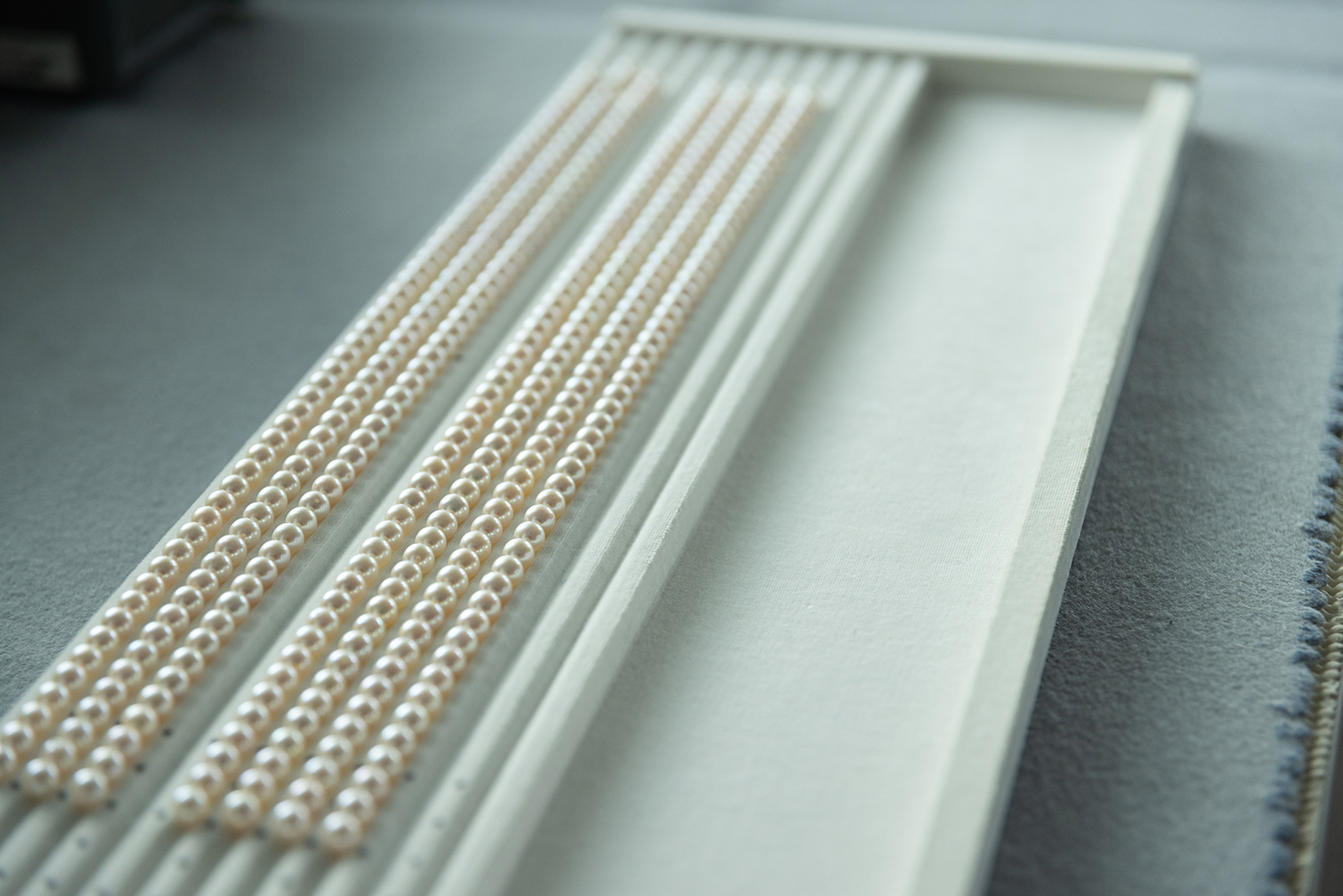
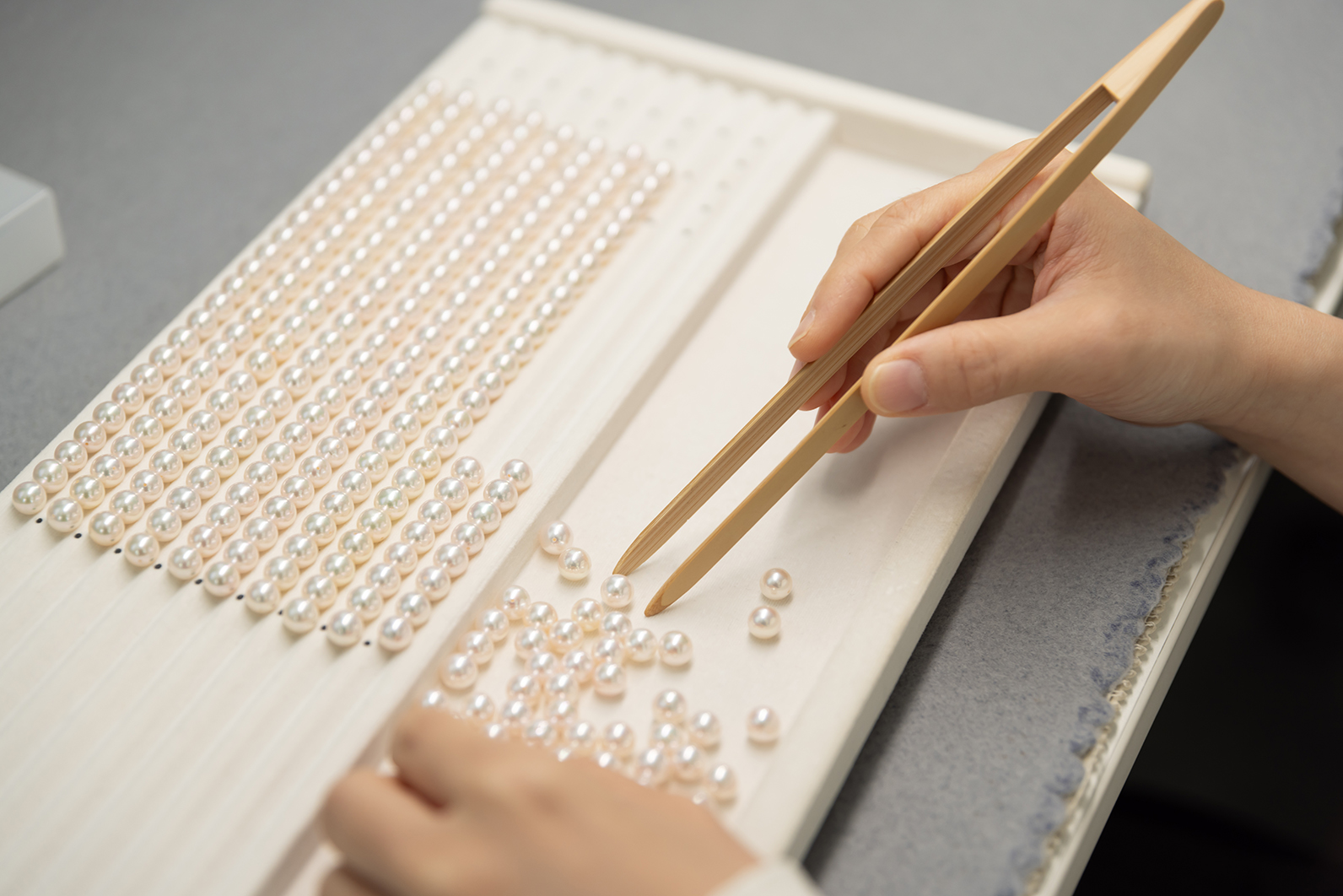
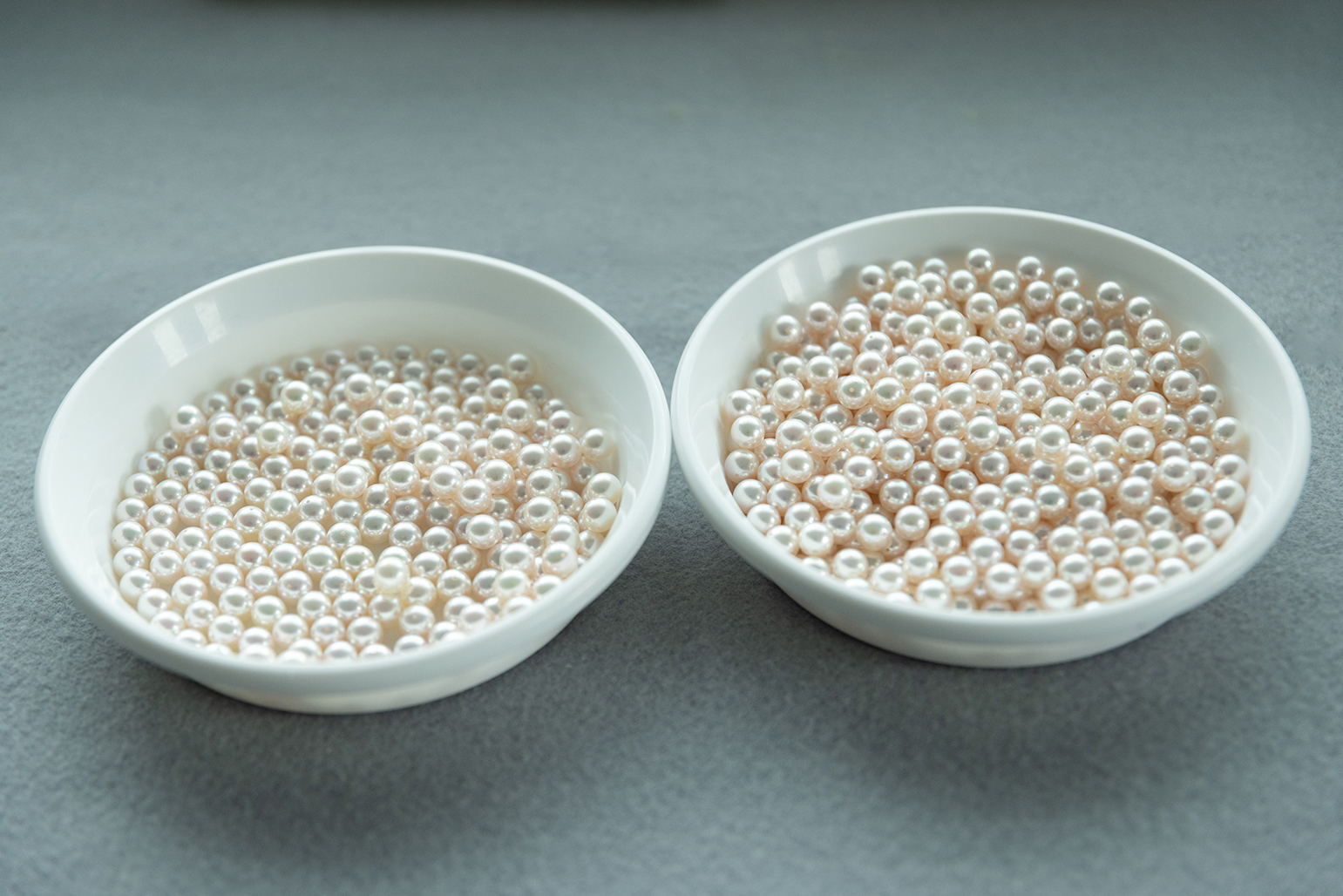

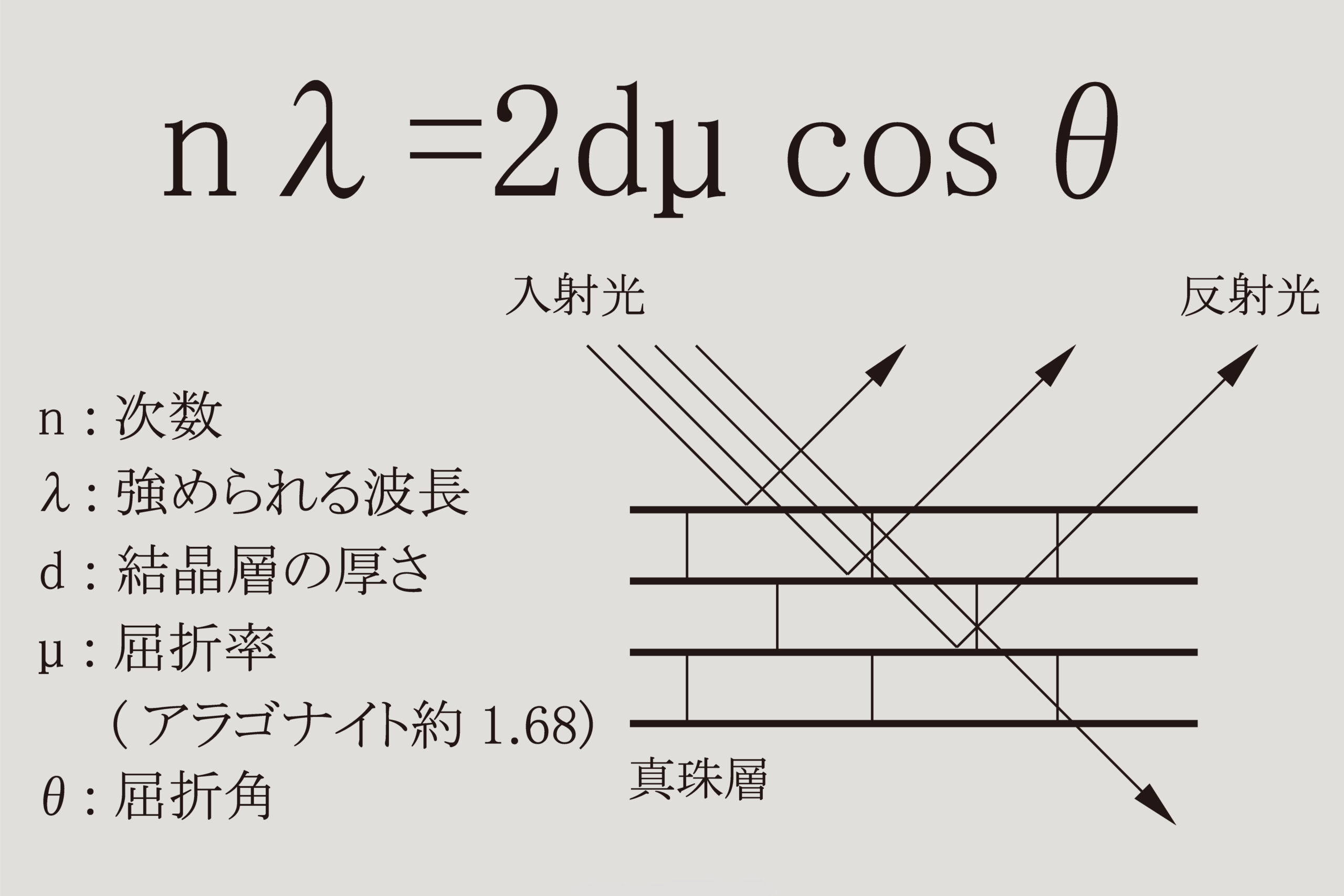
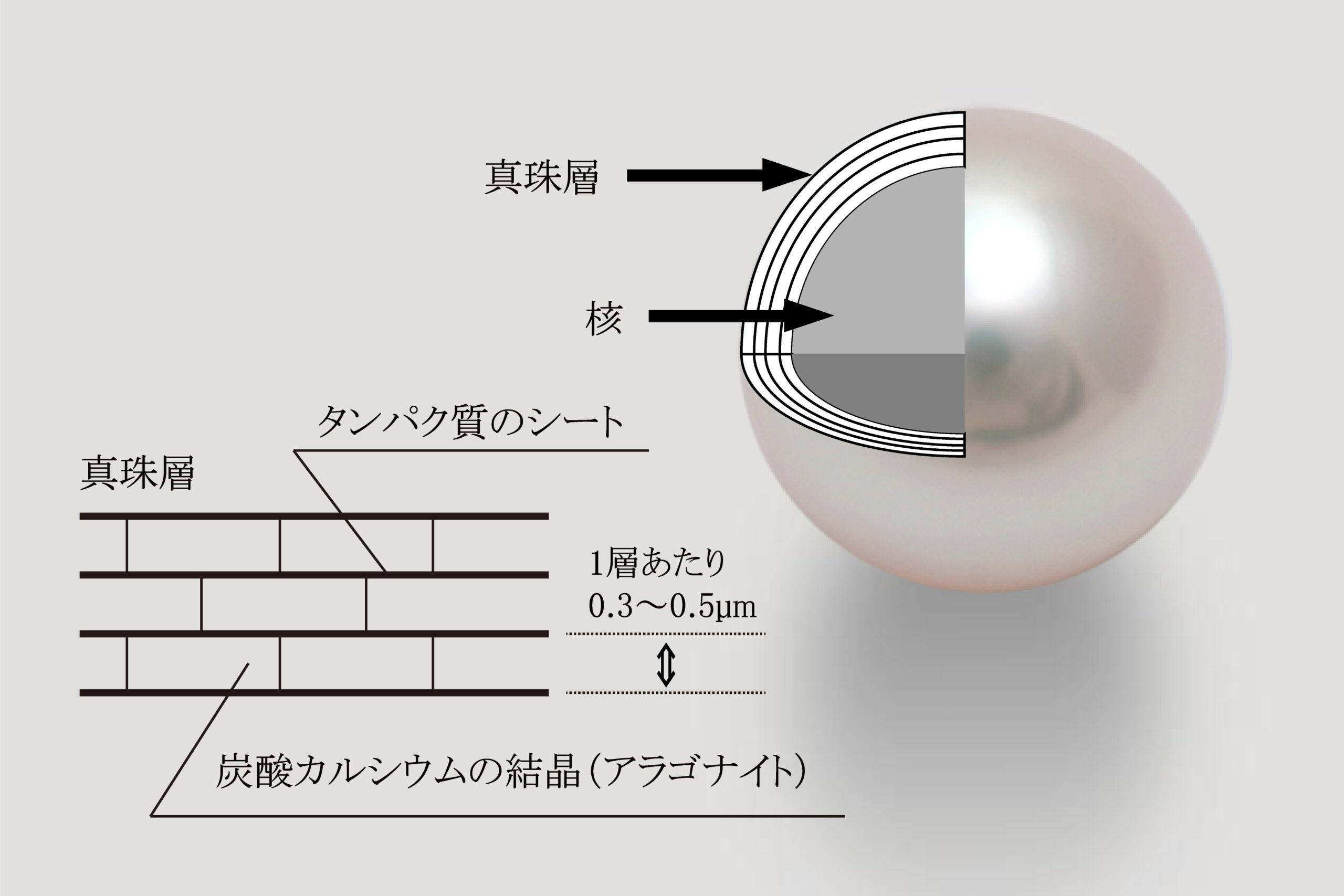
South Sea Pearl
Large and impactful South Sea pearls
South Sea Pearl
The mother oysters that give birth to the South Sea Pearls come in two varieties: Silver-Lip and Gold-Lip. In Australia, the variety known as Silver-Lip is more common among the white-lipped pearl oysters. These tend to produce large pearls in white hues. On the other hand, in Indonesia, the Philippines, and Myanmar, the Gold-Lip variety of the white-lipped pearl oysters is more prevalent, leading to the creation of pearls in gold and yellow shades. Both varieties are cultivated in the warm waters of the southern seas. Due to the large size of the white-lipped pearl oyster, pearls produced are generally larger compared to Akoya pearls. Moreover, with a cultivation period of nearly two years, these pearls have thicker nacre and a more profound, lustrous shine compared to Akoya pearls.
- Shape
- Size
- Color
- Surface
- Luster
- Thickness
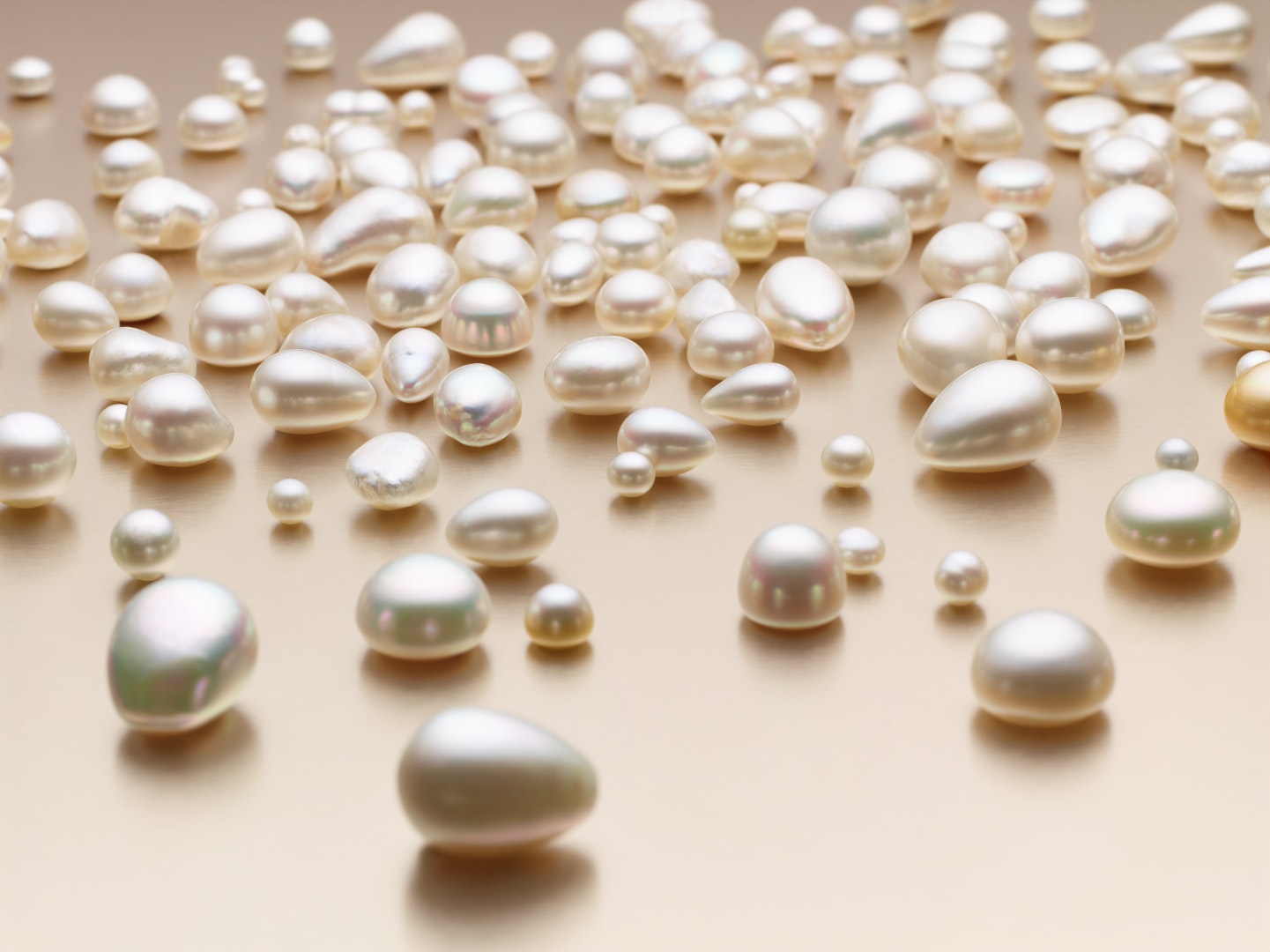
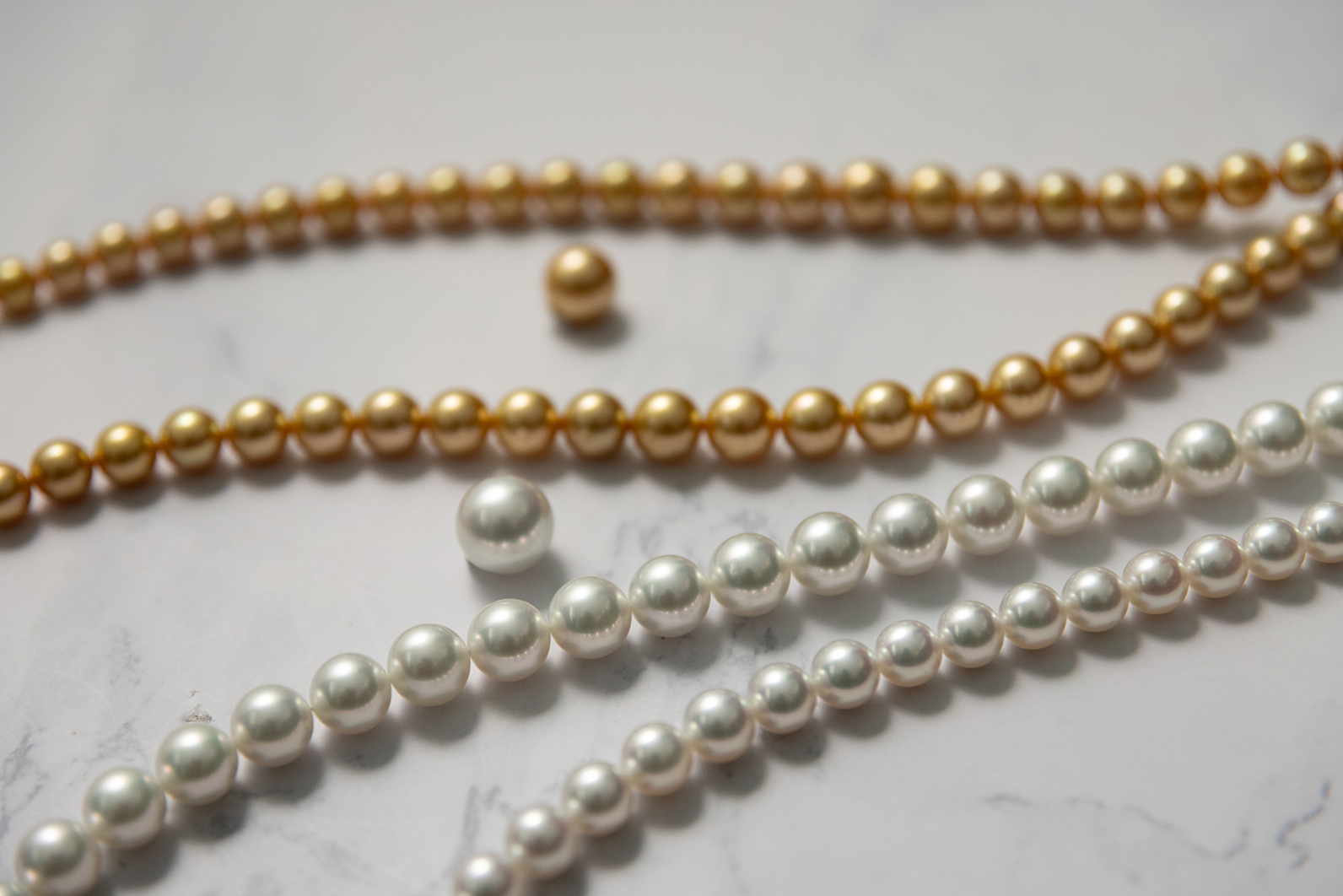
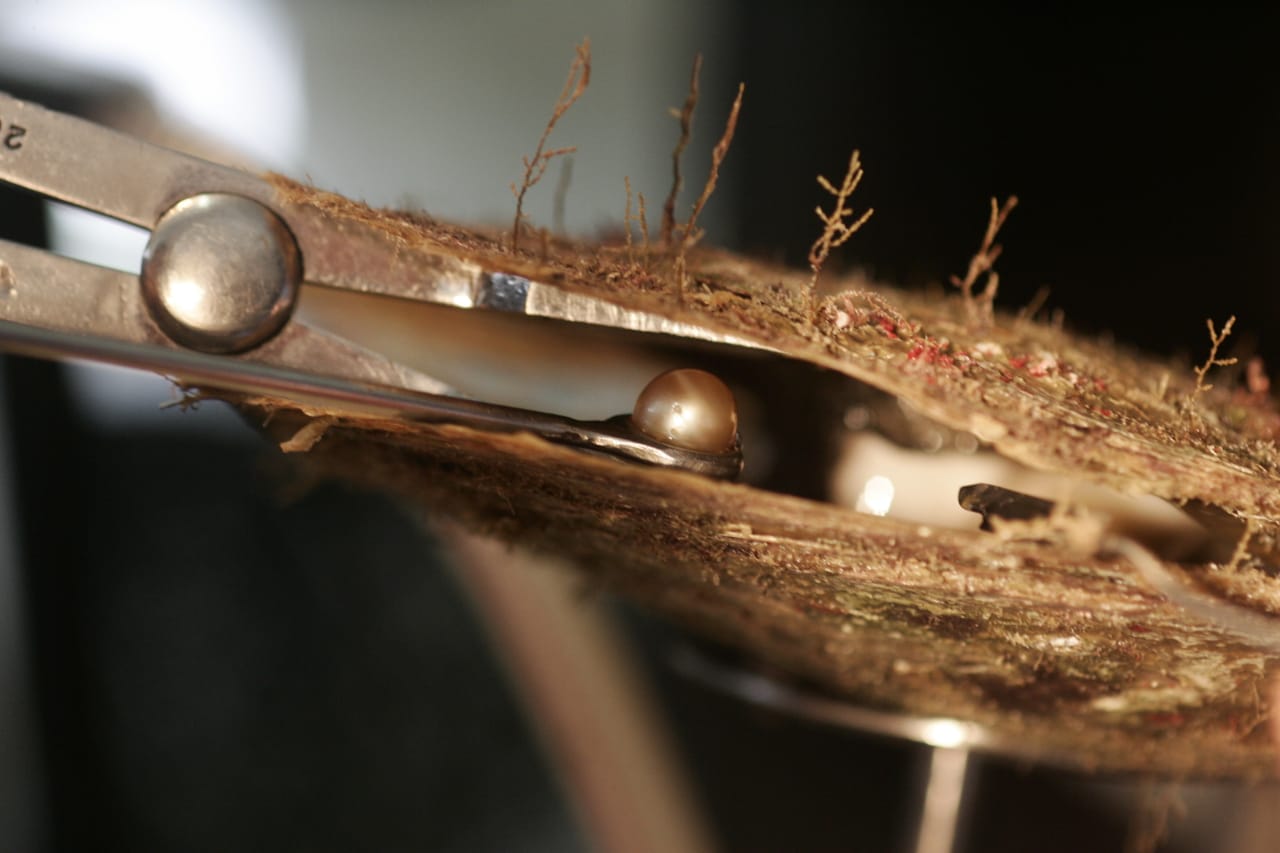
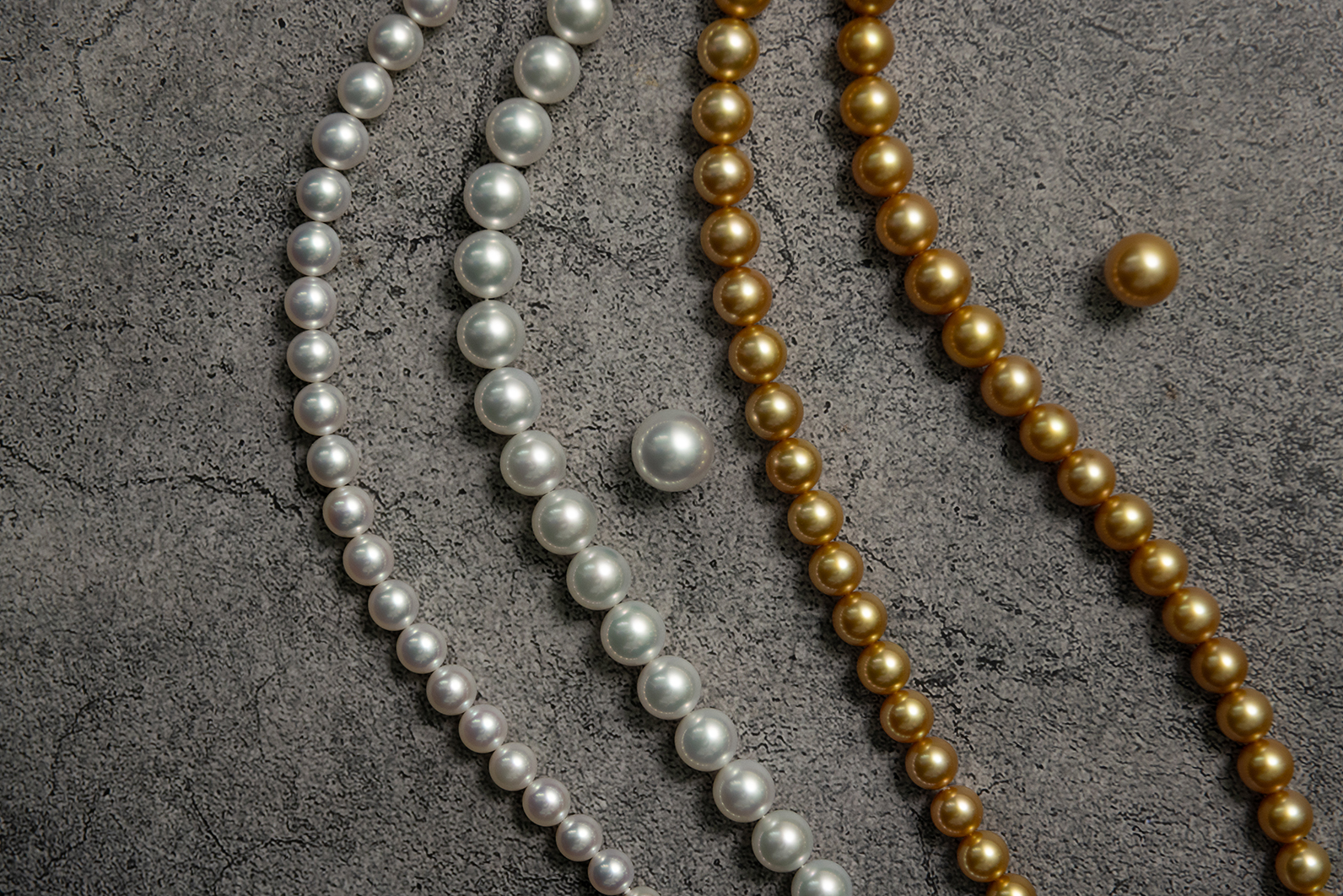

The nacreous layer consists of thousands of incredibly thin crystalline layers, each about 0.3 microns or 0.0003mm thick. This stacked structure generates brilliance from both internal and external sources, defining the unique character of pearls.
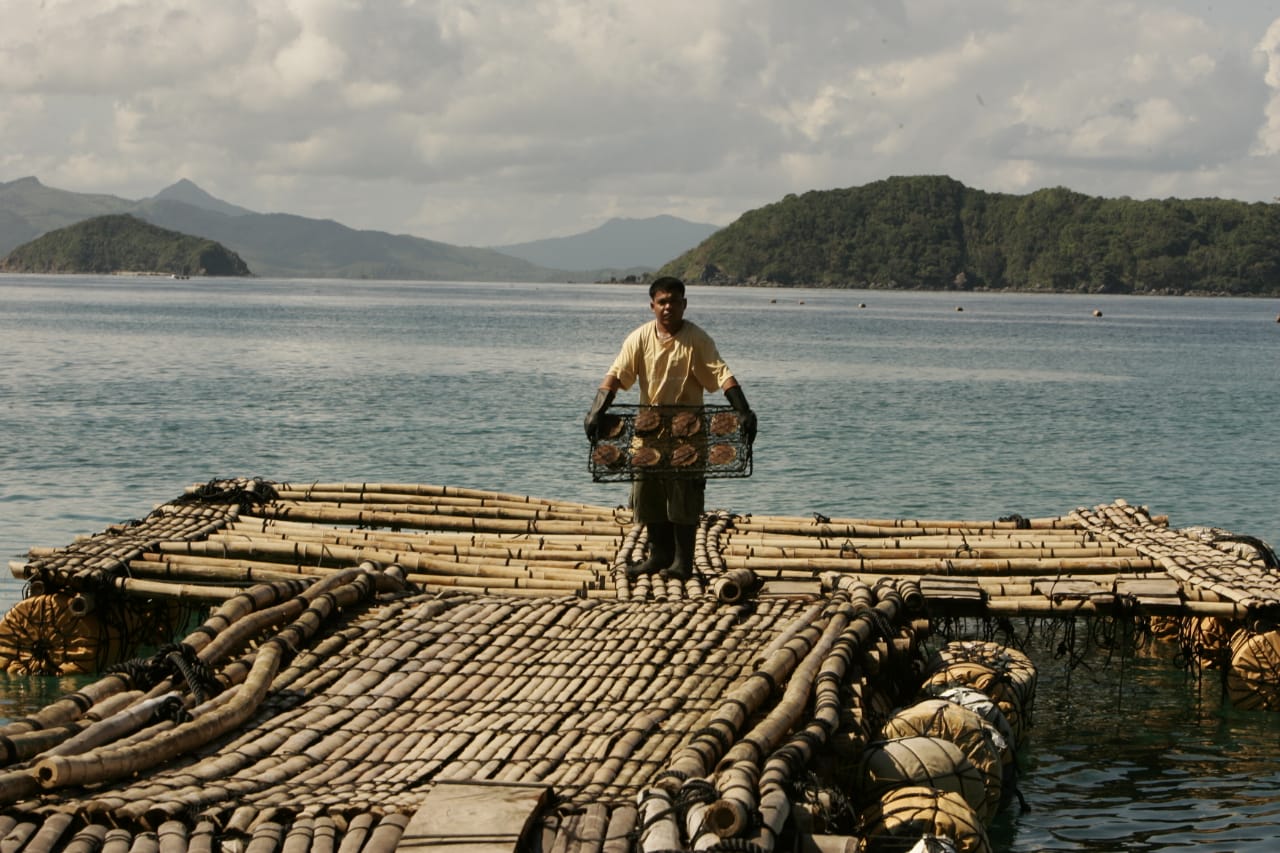
Tahiti Pearl
In mythology, it is said that gods poured the radiance of the sea and fish as a gift from the heavens to the ocean, creating pearls.
Pearls, cherished by many prominent figures, have a special place in cultural narratives.
Tahiti Pearl
The Black-Lipped Pearl Oyster inhabits a wide area spanning about 30 degrees north and south of the equator. The main production areas include tropical to subtropical regions near the equator in the South Pacific, such as French Polynesia (Tahiti), the Cook Islands, Fiji, and Australia. Approximately 95% of the production of Black-Lipped Pearls comes from Tahiti, which is why they are also known as Tahitian Pearls. They are also cultivated in Okinawa Prefecture, Japan. These mother oysters prefer areas with suitable tidal flows and clean seawater in the lagoons surrounding islands or atolls. Over an average period of 4 to 5 years, the Black-Lipped Pearl Oysters grow to sizes ranging from 10 to 20 cm.
- Shape
- Size
- Color
- Surface
- Luster
- Thickness
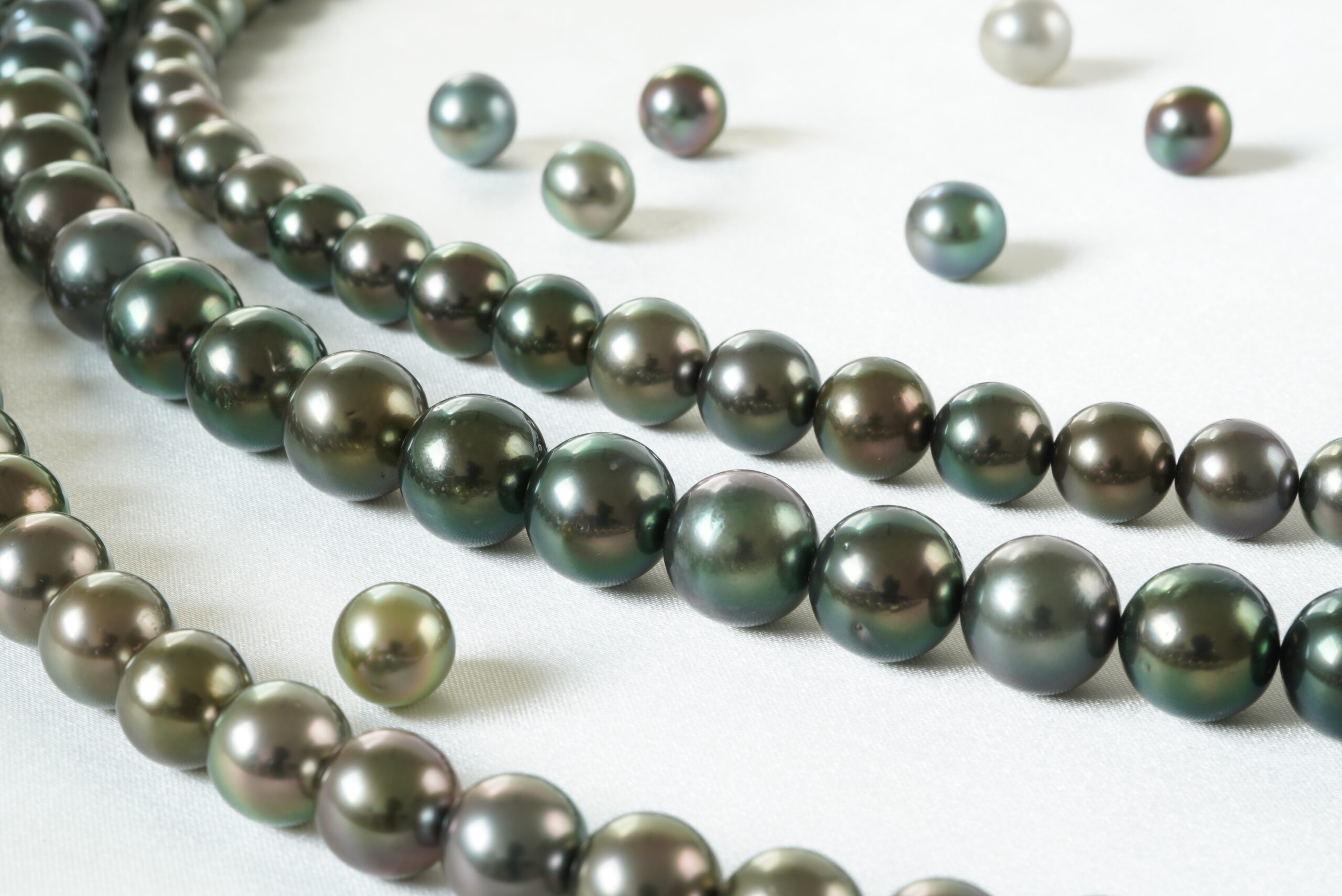
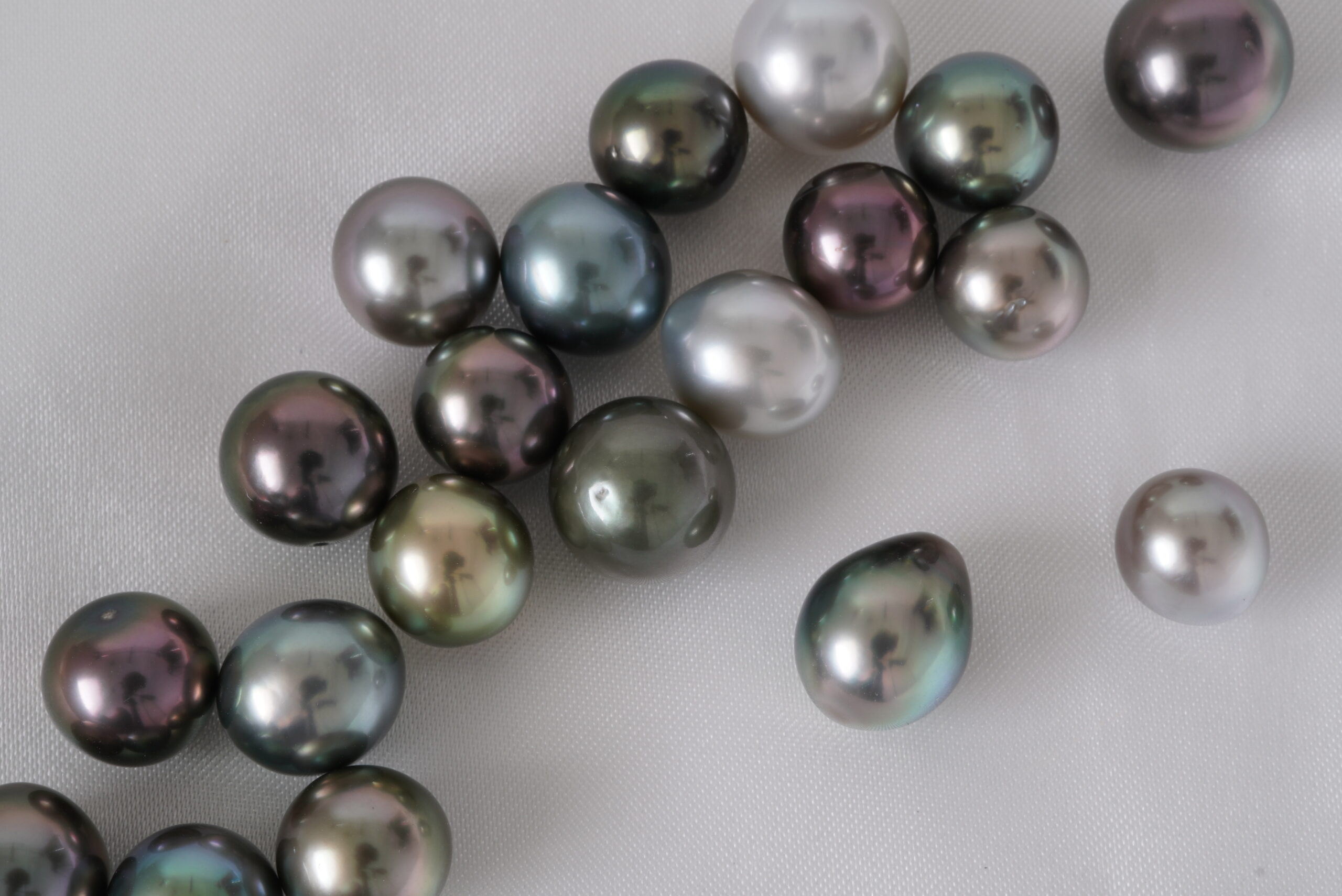
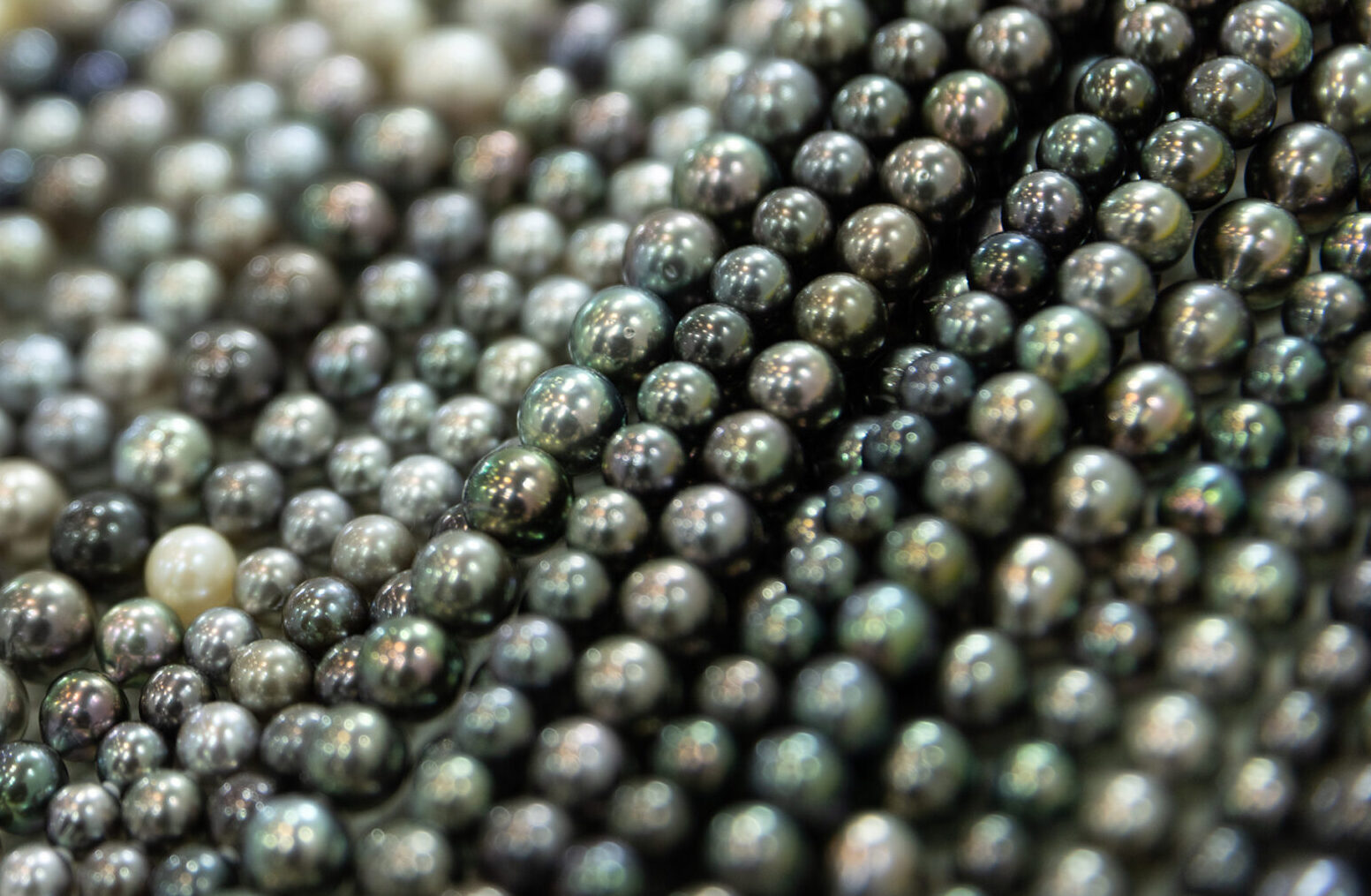


The nacreous layer is composed of thousands of incredibly thin crystalline layers, each measuring about 0.3 microns or 0.0003mm, stacked on top of one another. This structure generates the brilliance from both internal and external sources, defining the distinctive character of pearls.
